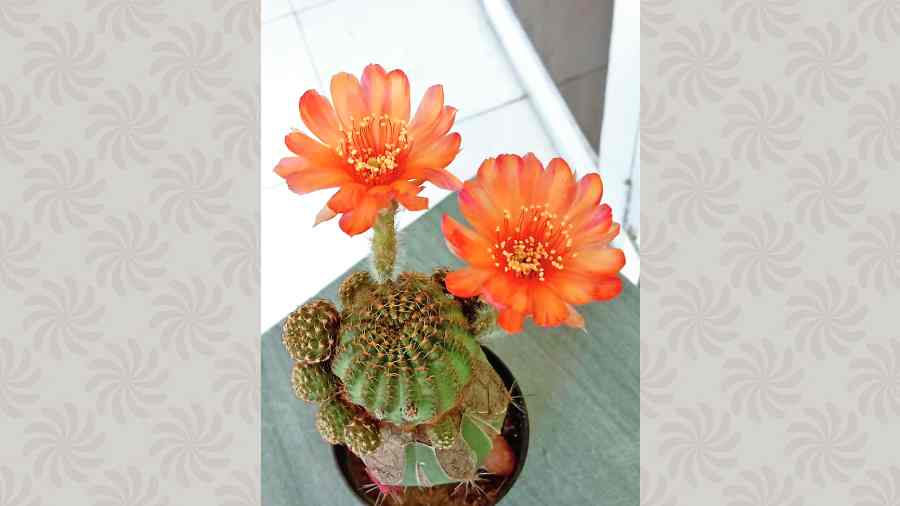Everyone interested in gardening has at some point or the other grown cacti. Their bizarre shape and unusual beauty draw people towards them and there’s no greater joy than watching them thrive under your care.
Cacti have so many species. Some are easily available and others are rare and expensive. These plants do not like heavy watering or direct scorching sun. Sometimes, even after taking immense care, we experience sudden death of a delicate cactus. This can be painful for a plant lover. Cactus grafting is a great method to help evade this problem.

(From left) Gather the rootstocks you want to work with; you will need a knife, rubber bands, alcohol and fungicide; after cutting, join both the rootstock and scion together by the vascular ring; secure the joint with rubber bands
Grafting is done mainly for three reasons-
• To save a cactus from sudden rot/ death
• To improve the growth of slow growing cactus
• To feed/ save coloured cactus those do not have their own chlorophyll
For cactus grafting we need rootstock and scion. A grafted cactus is formed when two different species of cacti are combined together to form a single plant. The lower green part of the grafting is called stock and the upper part is called scion.
Generally we prefer cylindrical/ columnar cactus as stock. Periouskopsis cacti are used for very small sized pups or scions. Hylocereus (Dragon fruit), Trichocereus, Myrtillocactus geometrizans and Opuntias are also used regularly. Summer is the best time to perform a cactus grafting.

For a successful grafting we need —
• A sharp knife
• Rubber bands
• Alcohol
• Fungicide
First, select plants as the stock and scion. Take the knife and sterilise the blade of the knife with the alcohol. Cut evenly the head of the rootstock from where the growth started. Now sterilise the knife again with alcohol and cut the scion from the base.
Join both the rootstock and scion together by the vascular ring. Make sure that the vascular ring of the two plants overlap, otherwise grafting will fail. After combining the two, use rubber bands to secure the joint.
Next, apply fungicide powder to the wounded parts to avoid fungal infection. Keep the new graft in shade for a week.
After that, slowly introduce the plant to sunlight. Some prefer using a plastic bag to cover the graft, but I suggest against this because air circulation will help the healing process.

Arijit Poddar, a GD Block resident and secretary of Bidhannagar Horticultural Society, shares innovative tips on gardening
